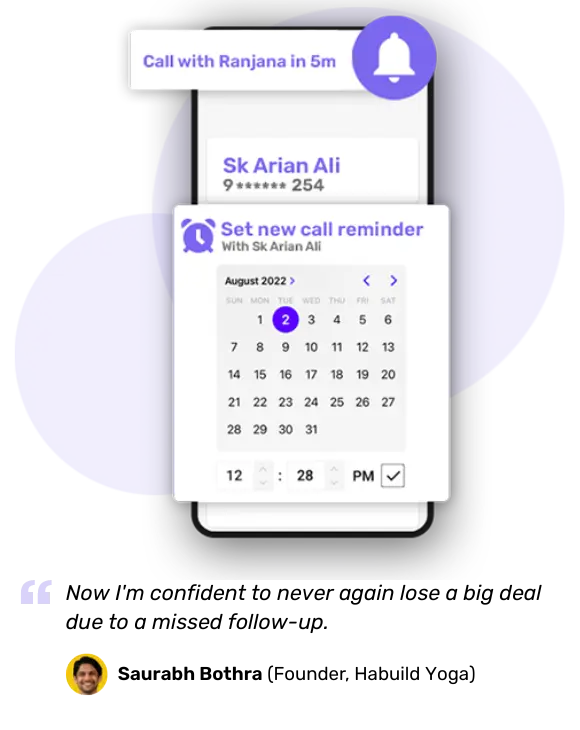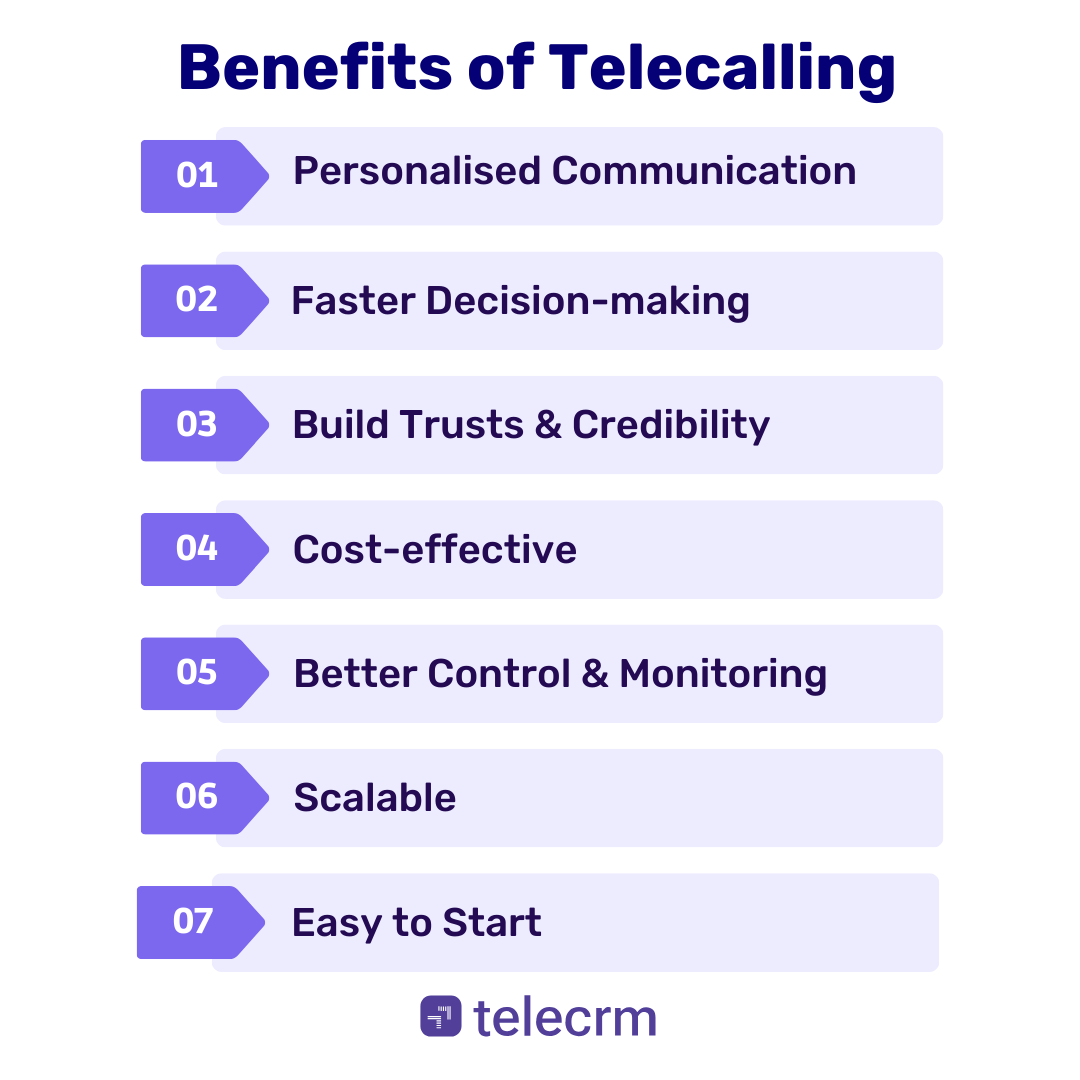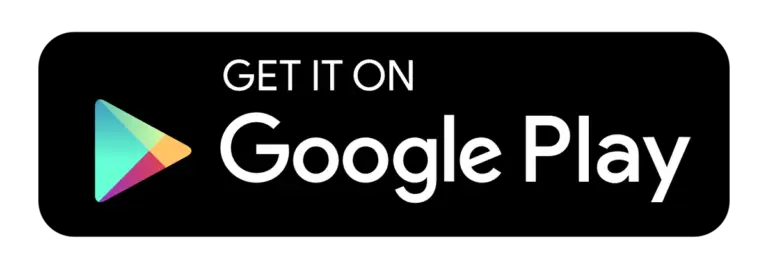
Ever wondered why you keep getting calls from random numbers asking if you’re interested in a loan, insurance or a credit card upgrade? That’s telecalling.
It’s one of the most common yet misunderstood jobs out there. For some people, it’s an annoying sales pitch. For others, it’s a solid way to kickstart a career, especially if you’re good at talking to people and don’t mind a bit of rejection.
This article is for anyone who wants to understand what telecalling actually is — whether you’re a student looking for your first job, someone switching careers or a business owner trying to figure out if telecalling makes sense for your sales team
Let’s break it down in the simplest way possible — no jargon, just straight answers
Telecalling is when a company calls people to promote a product, offer a service, get feedback or just share information. It’s done over the phone — sometimes by humans, sometimes by automated systems.
Most of the time, the person calling is following a script and trying to meet a specific goal like getting a sale, booking a meeting or just collecting data.
People often confuse telecalling with other aspects of telecalling, but it’s not the same:

There are two broad types of telecalling — inbound and outbound. Both involve talking to customers over the phone, but the direction of the call and the intention behind it are different.
Here, the customer calls you — they might be calling because they saw an ad, clicked on a link or need help with something they already bought. As an inbound telecaller, your job is to
The customer already has some interest so they reached out. And the goal for a telecaller is to receive those incoming calls and guide them, support them or push them a little closer to buying. Think of this as handling interest that’s already there.
These are the calls where you’re reaching out to customers or potential prospects — sometimes to complete strangers, sometimes to existing leads or customers.
Outbound calls can be for
This is more proactive, but also tougher — you’re trying to create interest from scratch or restart a conversation that went cold. Most sales-related telecalling jobs fall under this category.
Here’s a quick table to help you understand the difference better:
| Feature | Outbound telecalling | Inbound telecalling |
| Who initiates the call | The telecaller (business) | The customer or prospect |
| Purpose | Promote products, follow up, generate interest | Answer queries, provide support, assist with existing issues |
| Lead type | Cold or warm leads | Mostly warm or existing customers |
| Approach | Proactive (reaching out) | Reactive (responding to incoming calls) |
| Common use cases | Sales, reminders, surveys, feedback collection | Customer support, order tracking, product info |
Telecalling is an integral part of EVERY business in some form or the other. While most businesses have an in-house telecalling team, others may outsource it to a telecalling service provider.
Let’s look at how different teams in a company use telecalling to their advantage:
Imagine you’re a travel service provider. You have a list of people who clicked on your ad for a holiday package but didn’t book. A telecaller can reach out to these people, ask a few questions and figure out who’s genuinely interested and who’s just browsing.

✅ Goal: Identify hot leads worth following up
📞 Example call: “Hi Riya, I saw you checked out our Bali package. Do you have specific dates in mind, or are you just exploring options?”
This is the most common use — calling leads to explain products, handle objections and close deals.
For example, if you sell software to small businesses, a telecaller can walk a potential customer through features, offer a demo and seal the deal.

✅ Goal: Convert interest into action
📞 Example call: “Hey Akash, just wanted to check if you had any questions about the CRM we discussed last week — would you like a quick demo today?”
Telecalling also helps when customers face issues. A quick call can solve a problem faster than an email or ticket.
✅ Goal: Keep customers happy and reduce churn
📞 Example call: “Hi Meena, we noticed you weren’t able to log in. Let me walk you through the steps right now.”
Want to know how your customers feel about your product, service or even your marketing efforts? Telecalling is one of the most personal and effective ways to get real, honest feedback.
✅ Goal: Understand customer experience and improve
📞 Example call: “Hey Raj, you’ve been using our app for a month now — how’s it going? Anything you’d like us to improve?”
Sometimes people forget — whether it’s a pending payment, a scheduled appointment or a free trial that’s about to end. A gentle call can make sure things don’t fall through the cracks.

✅ Goal: Nudge customers at the right time
📞 Example call: “Just a quick reminder, your subscription expires tomorrow — would you like to renew now or need any help?”
Before launching a new product or entering a new region, companies often use telecalling as part of their marketing strategies to understand the market better.
✅ Goal: Get real-world insights from potential customers
📞 Example call: “We’re exploring launching our product in Pune — can I ask you 3 quick questions about your current setup?”
Telecalling isn’t always about pushing a sale. Sometimes, it’s just about staying in touch, keeping the customer’s interest at the forefront and showing them that you care.
✅ Goal: Build trust and long-term loyalty
📞 Example call: “Hi Sunita, it’s been a while since we last spoke — just wanted to check in and see if there’s anything you need help with.”

Okay, so now you know how businesses use telecalling — but why is it still such a popular method, especially when we’ve got emails, social media and chatbots?
Here’s the thing: telecalling works, and it comes with a bunch of unique advantages that other channels just can’t match. Plus, it’s the most cost-effective way to business growth for any company.
A phone call feels more human than a message or email. You get to hear the person’s tone, respond instantly and build a real connection.
You might ignore a promo email, but a friendly voice on a call? You’re more likely to stay and listen.
Unlike forms or chat, where there’s a delay, telecalling gives you immediate reactions. You can ask follow-up questions, clear doubts and even change your pitch on the fly based on the customer’s response.
Think about it: If someone says, “I’m not sure if this is the right time,” a good telecaller can turn that hesitation into interest, right then and there.
When people hear an actual voice, especially one that’s helpful and respectful, it builds trust much faster than cold texts or mass emails. This is especially useful in high-ticket sales or service-based businesses.
Customer satisfaction is everything in sales, and a voice adds a human touch that makes your brand feel more reliable.
Compared to field sales or running big ad campaigns, telecalling is affordable. All you need is a phone, a CRM and a trained caller — and you’re good to go. Plus, you can scale easily by hiring more callers as you grow.
For startups and SMEs, it’s one of the most budget-friendly ways to reach a lot of people quickly.
With the right tools (like call recordings, CRMs and analytics), you can monitor how calls are going, improve scripts and train your team better — all in real-time.
Bonus: You know what’s working, what’s not and where to tweak things, which makes your entire sales or support process smarter.
In many parts of India and other emerging markets, people still prefer talking over the phone rather than chatting online or reading emails — especially in tier 2 and tier 3 cities.
You don’t need a fancy degree or 10 years of experience to start telecalling. With a good script, some basic training and the right mindset, almost anyone can pick it up and start contributing.
You might think telecalling is just for call center or those folks always selling credit cards — but in reality, it’s used across all kinds of businesses, in all kinds of industries.
Here are some examples of where telecalling plays a key role — from startups to large enterprises:
Real estate agents rely heavily on telecalling to follow up with leads, book site visits and update potential buyers about new listings or price changes.
From coaching classes to online learning apps, these businesses use telecalling to guide students, share course details and follow up on inquiries.
Banks, NBFCs, loan agents and insurance firms use telecalling to pitch products, collect documents or remind customers about renewals and EMIs.
Hospitals and clinics use telecalling for appointment reminders, health checkup packages and even post-treatment follow-ups.
E-commerce businesses use telecalling to connect directly with their target customers, whether it’s to confirm large or suspicious orders, upsell related products or request reviews after a purchase.
Travel agencies, tour operators and hotels use telecalling to follow up with leads, confirm bookings and cross-sell packages like travel insurance or guided tours.
B2B software companies use telecalling to schedule demos, follow up on website leads and provide onboarding support.
Note: Read our article on telecaller job descriptions to better understand telecalling use cases in different industries.

If this was or is your approach to telecalling, this section is for you!
Telecalling isn’t simply a call to buy, it’s a call to listen, understand and provide viable solutions to your prospects. And in 90% of the cases, a satisfied prospect transforms into a customer automatically. Here’s the list of key telecaller skills you need to acquire to ace calling:
This one’s obvious — if you’re going to be talking all day, you need to be clear, polite and confident.
What it really means:
Talking is important, but listening is what actually gets the sale. You need to understand what the customer wants, where they’re stuck and what they’re not saying directly.
Pro Tip: Listen first, pitch later. That’s how you build trust.
Not everyone will say “yes.” Some will be rude. Some won’t answer. And some will hang up in 5 seconds.
If you can stay calm and keep going, that’s a superpower in telecalling.
You don’t have to be a techie, but you should be comfortable using CRM tools, dialling systems and messaging apps like WhatsApp.
At minimum: Know how to log calls, update lead details and send follow-ups — all within the system you’re using.
If you don’t understand what you’re selling, neither will the customer. A good telecaller knows the product inside out and can explain it in simple terms.
Golden rule: If you can’t explain it to a 10-year-old, you don’t know it well enough yet.
You’ll often have to call 50–100 people a day, follow up with yesterday’s leads and update everything in the CRM. Without time management, it’s easy to fall behind.
Pro Tip: Plan your call blocks, take quick notes and don’t spend 30 minutes on a single lead unless it’s worth it.
Sometimes, the customer is interested but unsure. Your job is to help them cross that mental hurdle — not by pushing, but by showing how your product solves their problem.
Related Read: 15 Tried and Tested Telecalling Scripts to Improve Sales
Let’s keep it simple: If you’re serious about telecalling, the one tool you absolutely need is a CRM (customer relationship management) software.
Not Excel. Not some notepad. And not just a dialer. A proper CRM, built to help you call, track, follow up and close.
Here’s why a CRM like Telecrm is the holy grail of telecalling, especially in countries like India, where calls and WhatsApp are the most commonly used tools for sales communication.
If you’re a telecaller, you know how difficult it is to use multiple Excel sheets, type in numbers and check the status of the lead. All this juggling just to make one call isn’t worth the time and effort. A CRM eliminates that need completely by giving you access to all lead and customer data in one central hub:
Without a CRM, your team ends up spending more time managing data than actually making calls.
With a CRM, everything’s streamlined — from lead assignment to follow-ups and closing the deal.
Whether you have 2 callers or 200, a CRM gives you control. You know who’s calling, what’s being said and what’s working.
You get insights like:
This is impossible to do manually or over shared spreadsheets.
Telecalling isn’t about making one call and being done. The real magic happens in the follow-ups. A CRM helps you:
Why waste time doing the same thing over and over?
With automation, you can:
Result? More time spent talking to customers, less time managing tasks.

Related Read: Top 10 Cold Calling Software for Your Business
In short, telecalling is used to,
Whether you’re a student exploring career options, a business owner looking to grow your sales or someone just curious about all those “loan offer” calls — now you know what telecalling is all about.
And suppose you’re a business owner looking to streamline your telecalling efforts with a CRM. In that case, you can look into Telecrm, an Indian CRM designed for sales teams that rely on telecalling and WhatsApp for communication. You can book a demo today to know more!


© Copyright 2025 Telecrm.in - All Rights Reserved • Privacy Policy • T&C


© Copyright 2025 Telecrm.in - All Rights Reserved • Privacy Policy • T&C